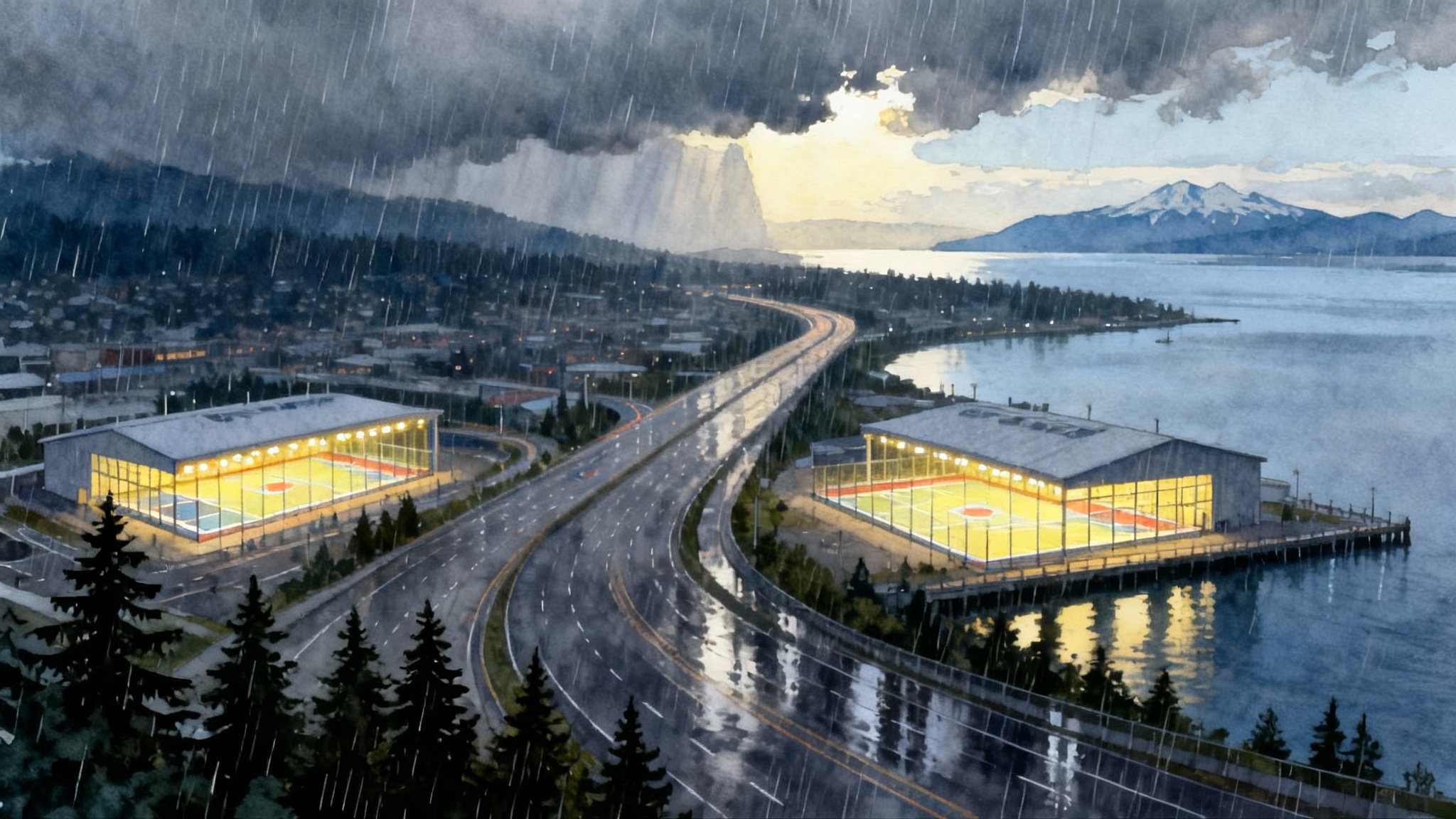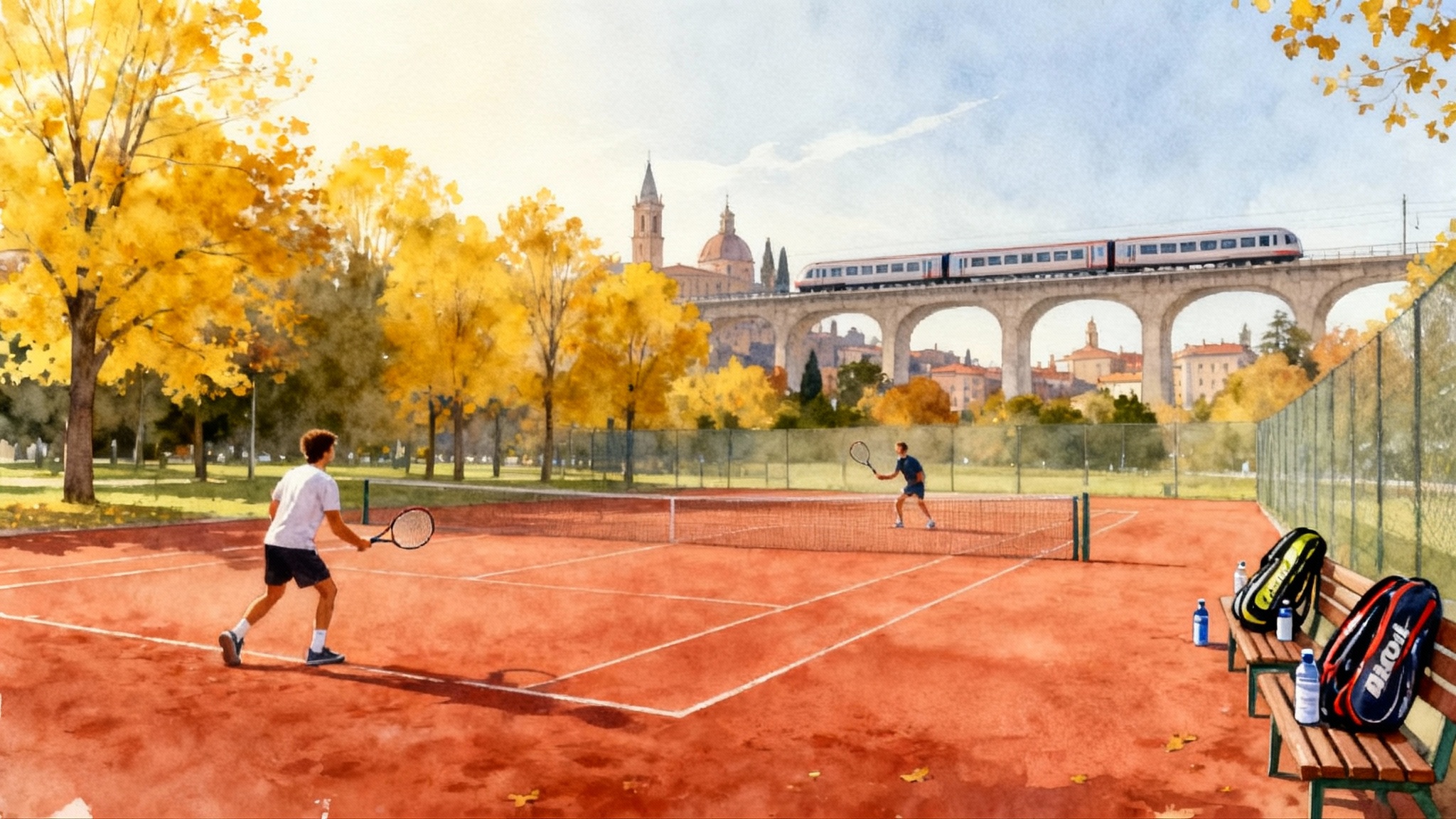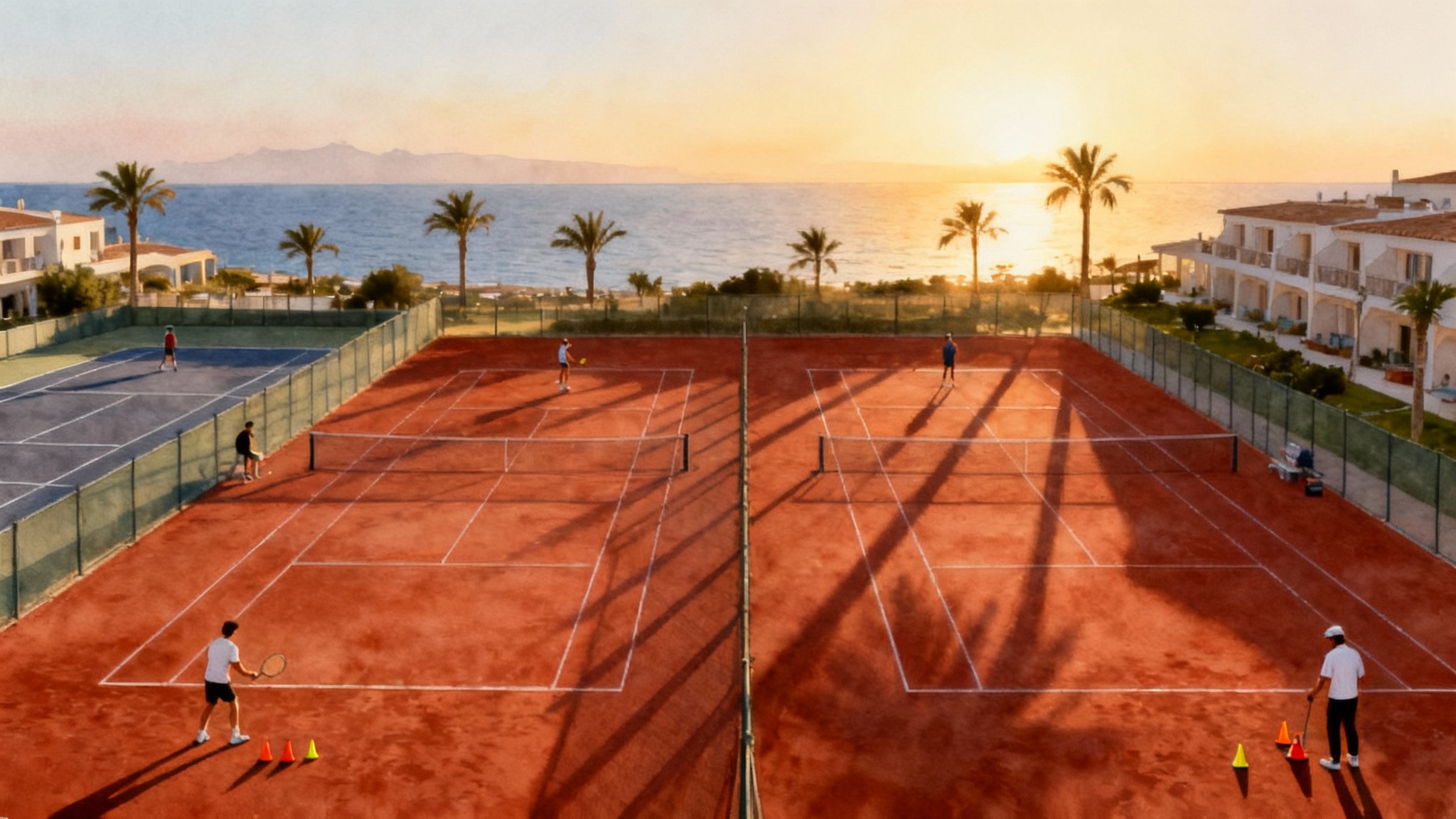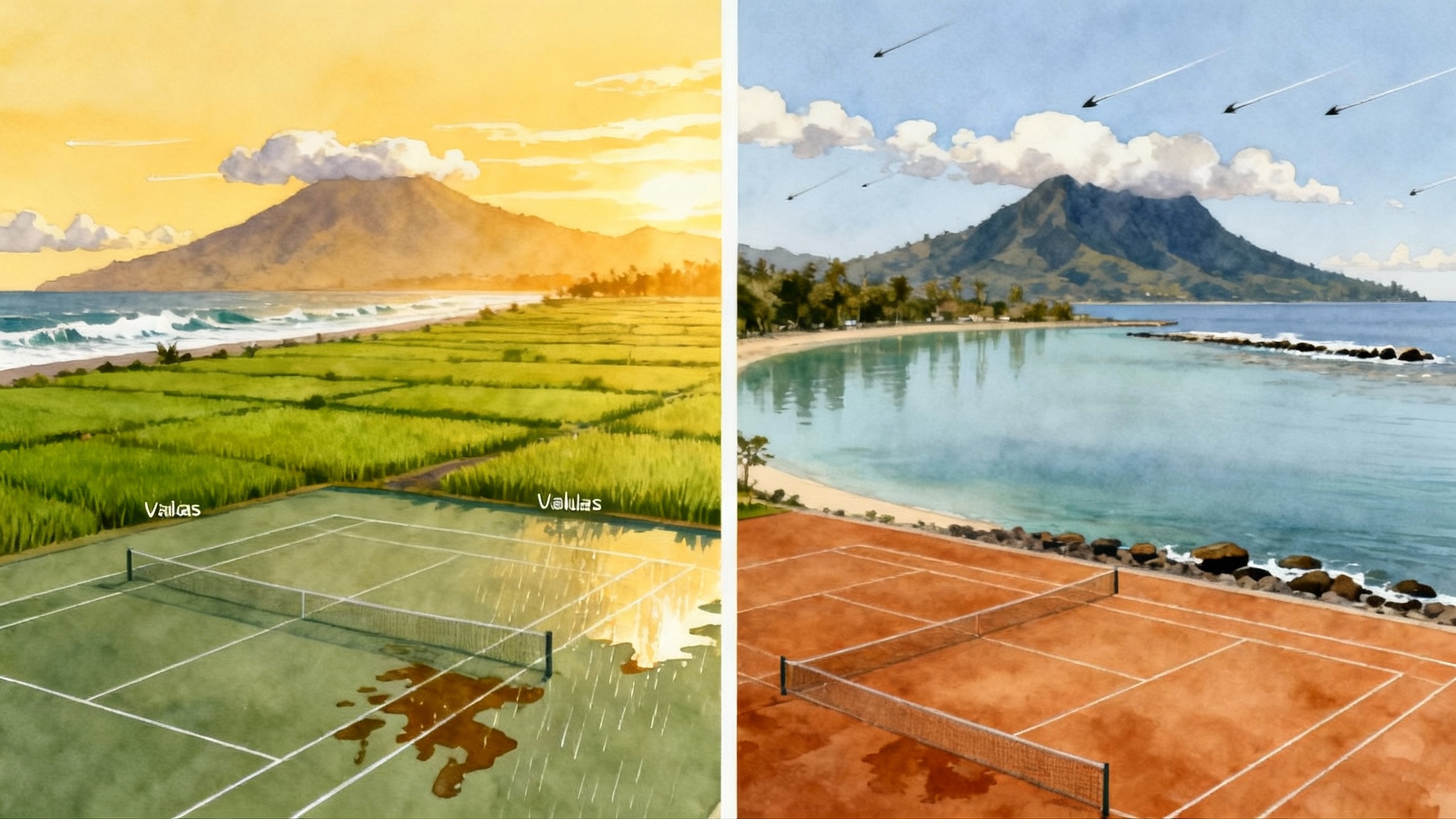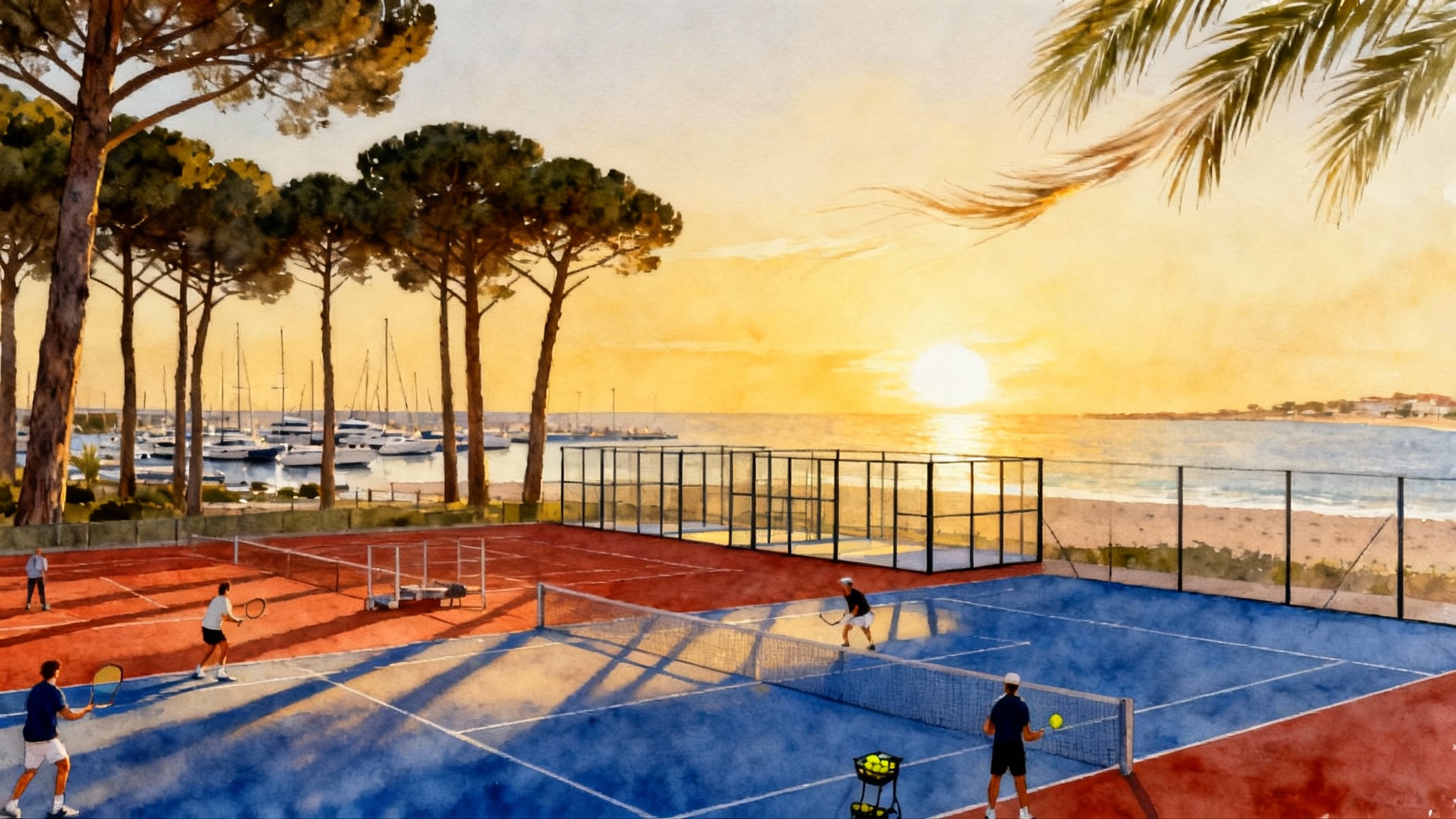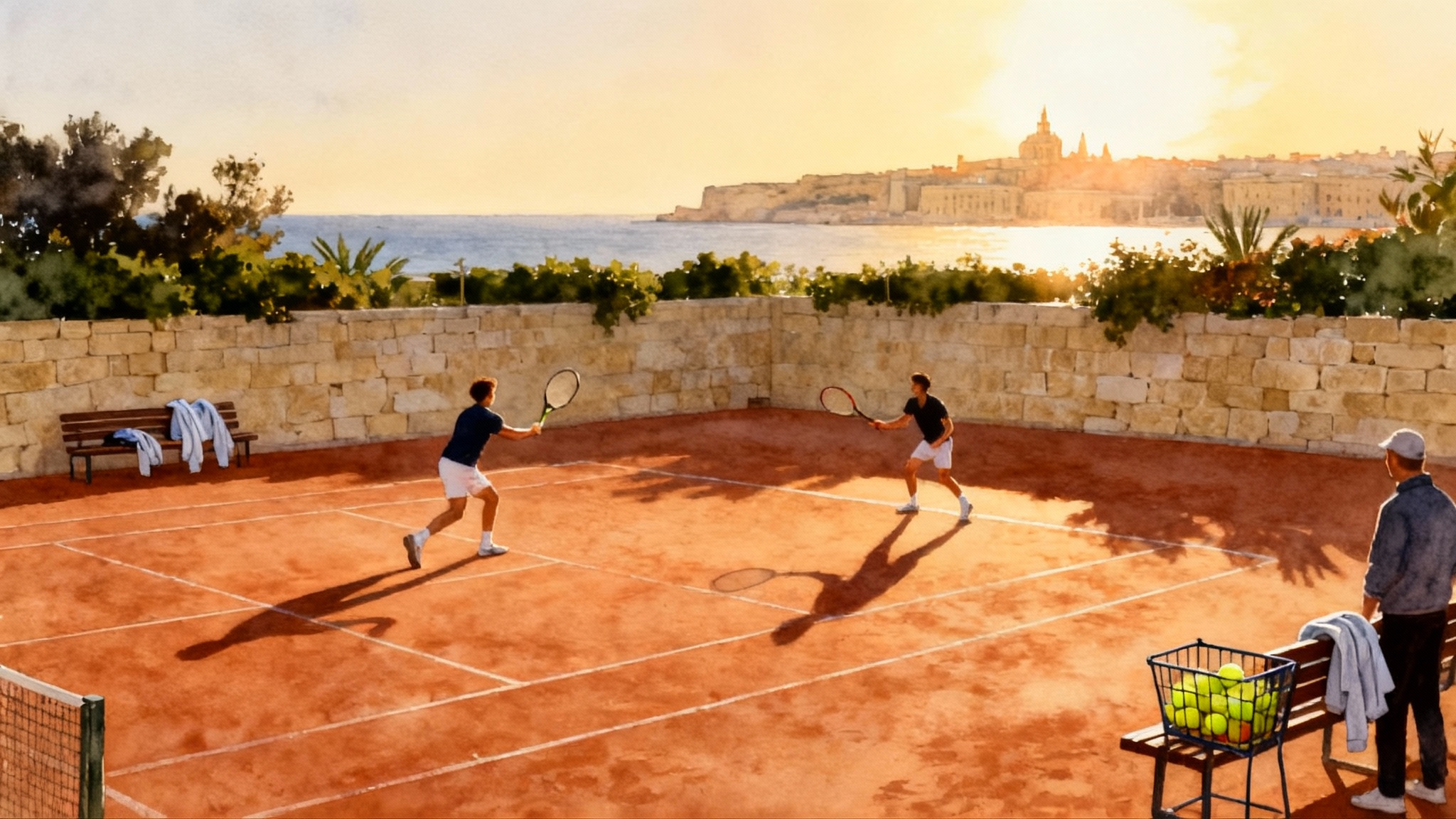Yokohama Tokyo Tennis 2025-26: Climate-Smart Training at YC&AC
Plan a tennis trip that beats Japan’s rainy season and typhoon risk. Use Yokohama Country and Athletic Club as your hub, time sessions for late Oct to Nov and Mar to May, and layer in match play, family culture, and walkable lodging.
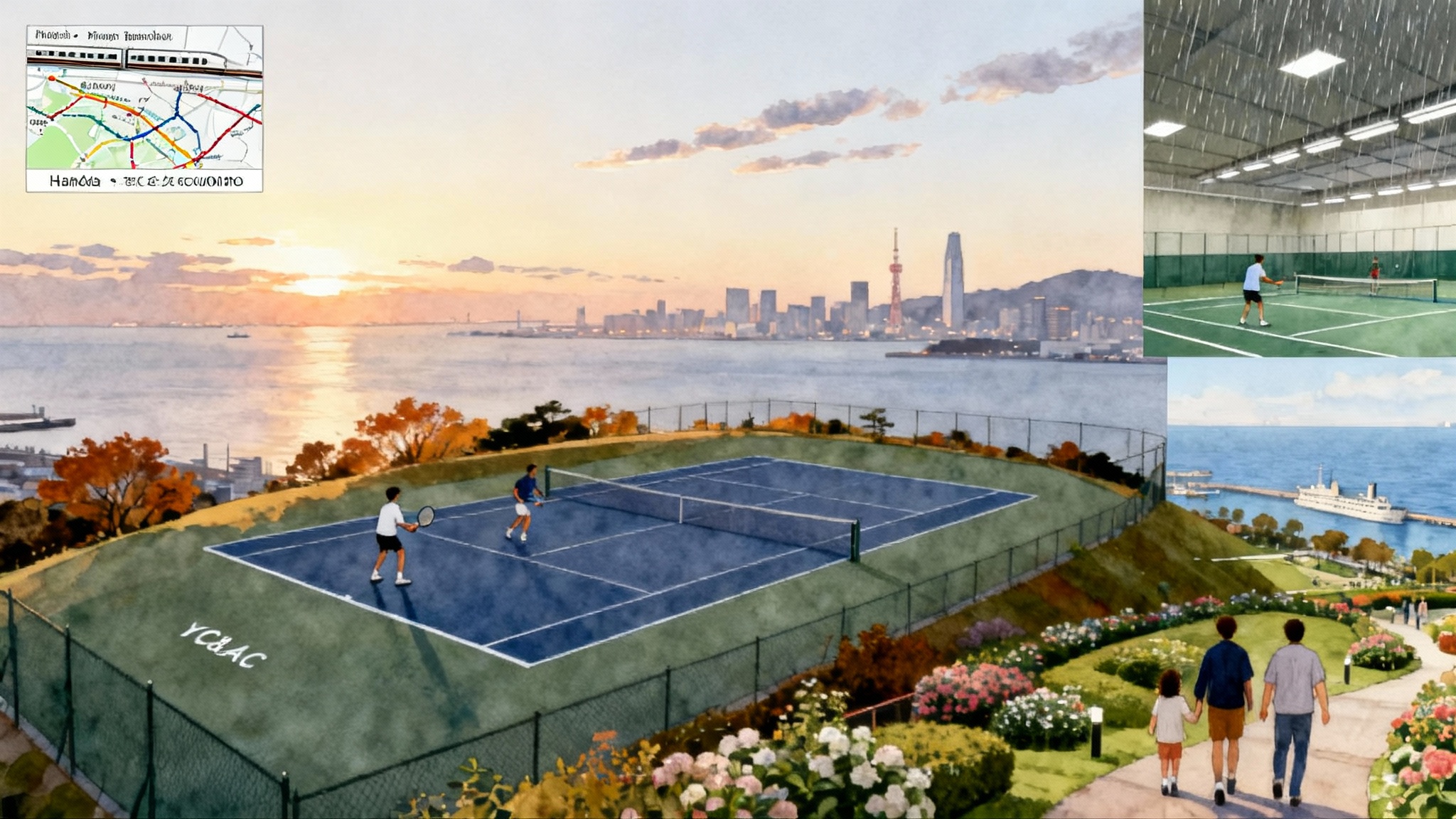
Why 2025–26 has two golden windows
Japan’s tennis calendar has two sweet spots that reward planners who respect the weather. The first runs from late October through November. The second returns from March through May. Temperatures are mild, humidity drops, and daylight is long enough for doubles after school or late afternoon fitness. By contrast, tsuyu, the early summer rainy season, typically soaks courts from early June into mid July, while tropical storms concentrate from August into October. If you build a travel-and-training plan around these two windows, you avoid the worst of both rain and wind. For weather context, review the Japan Meteorological Agency seasonal patterns to see how these windows line up with historical rainfall.
These windows matter even more around Tokyo Bay. Sea breezes can turn a routine rally into a depth-control exam, and humidity changes ball bounce and string response. In October and November, air is cool but not cold, and courts dry quickly after a shower. In March and April, cool mornings warm into steady afternoons. By May, the surface can get lively in the sun, which is great for developing height and spin without punishing heat.
Where YC&AC fits in: surfaces and sports science
YC&AC stands for Yokohama Country and Athletic Club, a historic multi-sport venue on Yokohama’s hilltop Bluff. It is positioned between residential calm and the bay’s big-city energy. For players, the draw is simple:
- Dual-surface training. Split time between a fast acrylic hard court and a more forgiving all-weather surface. Moving across two speeds improves footwork adaptability and resets perception of timing and contact height. Players who only train on one surface often overfit their swing tempo; pairing sessions across two surfaces avoids that trap. At the club, the YC&AC Tennis Academy runs programs from first rallies to tournament play.
- Sports-science support. Practical tools make the difference. Use on-court video to measure contact height and swing path, and pair it with ball-tracking apps to quantify depth, net-clearance, and spin category. Add a lightweight jump test in warmups to monitor readiness and adjust load. Collect session rate of perceived exertion from each player to keep weekly training stress in the right zone.
- A club culture that balances space and focus. The setting is calm enough for high-quality reps, but close enough to major transport and match venues to keep the trip efficient.
A 7-day itinerary that actually fits the weather
This sample plan assumes a Saturday arrival at Haneda Airport, with YC&AC as the training base and match play in Yokohama or Tokyo. Adjust blocks to your level and age group. Sessions list Objective, surface, and contingency.
Day 1, Saturday: Arrival and activation
- Morning or midday arrival at Haneda. Keikyu Line to Yokohama or Shinagawa, then on to your hotel. Drop bags, hydrate, and shake out stiffness.
- Afternoon: 60-minute mobility circuit and light hand-fed hitting on the slower surface. Objective: re-groove contact without overloading. Contingency: move to mini-court work under a roofed area if drizzle lingers.
- Evening: Early dinner, 10-minute calf and foot care, lights out.
Day 2, Sunday: Baseline timing and serve reload
- Morning: 120-minute hard-court session. Objective: rebuild depth window and serve rhythm. Drill set: cross-court plus line, then patterning into short-ball finishes. Video two serve angles to capture toss height and knee flex.
- Afternoon: 45-minute strength circuit using bands and bodyweight. Objective: hips and scapular control. Walk the neighborhood hills for 20 minutes to aid recovery.
Day 3, Monday: Surface switch and agility
- Morning: 120-minute session on the slower surface. Objective: height and shape. Emphasize topspin forehands over the high net, add drop-shot disguise reps.
- Afternoon: 30-minute agility ladders and lateral shuffles. Objective: foot placement when the ball sits up. Evening journal: note spin, bounce, and footwork differences across surfaces.
Day 4, Tuesday: Match tune and doubles systems
- Morning: 90-minute point play, short sets to four with no-ad scoring. Objective: first-strike clarity and return depth.
- Midday: Tactical film review. Clip three winning patterns and one hole that needs work.
- Late afternoon: 60-minute doubles on faster court. Objective: first volley quality and poach cues. Finish with 10 minutes of overhead footwork.
Day 5, Wednesday: Optional UTR or JTA match play day
- Morning through early afternoon: Compete in a local draw or organize verified match play. Treat this as a medium-to-high stress day.
- Post-match: Recovery run or bayfront walk, light mobility. Adjust next day’s load based on match length.
Day 6, Thursday: Rebuild and refine
- Late morning: 90-minute technical tune-up on the slower surface. Objective: neutral rally tolerance and height control in wind.
- Afternoon: 45 minutes of serves and returns only. Finish with eight quality second serves to each target.
Day 7, Friday: Peak day
- Morning: 120 minutes on hard court. Objective: competitive set play and closing. Keep volume focused and high quality.
- Afternoon: Culture time and packing. Early bedtime if competing on Saturday.
Rain plan baked in: book one indoor block on Monday or Thursday as insurance, and hold flexible fitness blocks on hotel grounds. If weather forces you indoors midweek, shift the match day to Thursday and slide technical work to Friday.
Rain plan: indoor contingencies that work
Tsuyu and typhoon remnants do not care about your calendar. Even in October or April, a front can push in showers. Create a three-layer contingency.
- Hold indoor time. Book at least one 90-minute indoor court within 30 minutes of YC&AC for Monday or Thursday. Choose carpet or cushioned acrylic to reduce joint load. The goal is not to match your outdoor ball; the goal is to keep the pattern and footwork work going. For more wet-climate tactics, see the Seattle–Vancouver indoor corridor playbook.
- Prebuild a wet-day practice. Use low-compression balls to shorten rebound and focus on face angle control. Add approach-volley patterns and return footwork, which translate well between surfaces.
- Strength plus skills. If rain closes all options, pair a 30-minute strength circuit with 45 minutes of technical shadow plus constraint drills. For example, shadow racquet drop to contact with a towel under the armpit to encourage spacing, then controlled hand feeds under a roofed walkway.
Pack for rain. Bring two towels, a compact poncho, and five extra grips per player. Use shoe covers or a spare pair for indoor carpet to avoid contamination. Take a small squeegee if you want to help clear lines after a shower.
Match play pathways: Universal Tennis Rating and JTA
A training week needs a scoreline to feel complete. You have two reliable channels around Tokyo Bay.
- Universal Tennis Rating. UTR events and verified match play are common in Greater Tokyo and Yokohama, ranging from one-day matchups to weekend draws. Build your week using the UTR event finder for Japan. Look for single-day formats that fit the itinerary above. Most events accept international players with a free account and offer clear levels by rating band, which removes guesswork.
- Japan Tennis Association. JTA is the national body. Many JTA-sanctioned events require a JTA Player Identification, but a number of club-hosted Open or Sat one-day draws allow guests. Read each event’s notes. Expect efficiency: short warmups, clear schedules, and punctual starts.
Practical tip: lock in match days by Monday night. If you cannot confirm a draw, schedule a verified practice match with a local hitting partner and record the result for rating credit.
Haneda-first logistics made simple
Fly into Haneda Airport rather than Narita if you can. Haneda sits on Tokyo Bay, close to Yokohama and central Tokyo. From Terminal 3 arrivals, follow signs to the Keikyu Line. Trains to Yokohama Station often take around 25 to 30 minutes, and to Shinagawa about 15 minutes. If you are staying near Motomachi, Ishikawacho Station is a convenient stop on the Negishi Line. For central Tokyo stays, the Tokyo Monorail to Hamamatsucho connects smoothly to the Yamanote Line.
Use a rechargeable transit card. Suica and Pasmo are tap-and-go cards that work on trains, subways, and convenience stores. Load the card in the station or add it to your smartphone wallet.
Travel light between airport and hotel. Consider luggage forwarding so players can move hands free on day one. Airport counters can send suitcases to your hotel for next-day delivery, which is ideal if you arrive before check-in.
Lodging by foot and budget tiers
Training is better when home base is simple. Around YC&AC, think in rings.
- Walk-to-court ring. Yamate and the Bluff area put you near the hilltop. Boutique inns, small apartments, and a few business hotels make this a practical base for two to four players plus a coach. Expect uphill walks, which double as light conditioning.
- Harbor ring. Motomachi, Chinatown, and Minatomirai give you more hotel choice and family fun within 15 to 30 minutes by foot or a short taxi. The waterfront paths are excellent for recovery walks.
Budget tiers to match your plan:
- Smart budget. Business hotels near Ishikawacho or Motomachi-Chukagai Stations, or serviced micro-apartments in Yamate. Typical range is 8,000 to 15,000 yen per room per night. Pick places with coin laundry and kitchenettes for team meals.
- Mid-tier comfort. Harborfront hotels in Minatomirai or classic properties near the bay. Expect 18,000 to 30,000 yen per room per night. Look for breakfast-included plans to simplify mornings.
- Family apartment. Short-stay units with two bedrooms and a small kitchen. Good for players with siblings and grandparents in tow.
- Splurge. Full-service towers with pools and spa in Minatomirai. Useful if you are combining a tournament with a few vacation days.
Wherever you stay, measure time in footsteps. Ten minutes on foot to a train, fifteen to the club, five to a convenience store. Those small distances make a big difference by Wednesday.
Culture add-ons for families
Keep the non-players happy and you will train better. Fortunately, Yokohama is generous to families.
- Sankeien Garden. A classic Japanese stroll garden in south Yokohama with historic buildings and seasonal colors. Ideal for a low-impact walk on recovery day.
- Cup Noodles Museum. Hands-on exhibits and make-your-own cup activity that kids love.
- Shin-Yokohama Ramen Museum. Street-like ramen hall where everyone can refuel after a session.
- Harbor cruise or Sea Bass boat. Short rides link the piers, bay views help you unwind.
- Yokohama Cosmo World. A small amusement park with views and gentle rides for a late afternoon break.
- Minatomirai museums. Science and industry exhibits that are engaging for school-age children.
Day trips are easy. Kamakura’s coastal temples and giant Buddha sit under an hour away by train and are perfect for your light day. In Tokyo, Toyosu’s immersive digital art spaces and the Odaiba waterfront offer weatherproof fun. Keep the travel window to four hours round trip or less so the player stays fresh.
Budget and packing checklist
- Balls and strings. Bring match-grade balls for peak day and a practice case for drills. Pack an extra set of strings and a compact stringing plan in case a frame pops. If you do not travel with a machine, identify a pro shop near your lodging.
- Grips and shoes. Tokyo humidity can chew through grips quickly. Five to eight extra overgrips per player is safe. If you plan to use indoor carpet, bring a dedicated pair of clean-soled shoes.
- Weather kit. Light rain jacket, two towels, cap, and a small squeegee. Electrolyte packets for humid days and a reusable bottle to fill at hotel or club.
- Recovery tools. Mini band, lacrosse ball, and a compact massage stick. Ten minutes nightly preserves calves and forearms better than any miracle gadget.
- Payments. Most places accept cards, but small shops and court rentals sometimes prefer cash. Keep a small stash for trains and snacks.
- Navigation. Download offline maps and save the club, indoor backup courts, and match locations. Share locations with your group and label exits at big stations.
Planning tools and session templates
Lock your plan in writing. List each day’s primary objective, session duration, surface, fallback drills, and travel plan. For another weather-aware planning lens, skim our marine-layer planning guide and adapt the decision rules to Tokyo Bay.
A few training templates that travel well:
- Contact-height ladder. Ten forehands clearing the tape by a racket head, then by two, then back to tape. Repeat on both surfaces to feel bounce differences.
- Second-serve circuit. Deuce wide, deuce body, ad T, ad wide. Eight balls at each target with a goal of five hits. Track score on paper.
- Return plus one. Coach serves a medium pace. Return deep middle, then first ball to the open court. Focus on footwork direction more than pace.
- Closing reps. Short ball approach with a simple decision tree: play through the line if the approach is slow and high, cross-court if the ball is low and fast. Finish with an overhead.
Putting it together: your 2025–26 playbook
- Book the window, not just the week. Aim for late October to mid November or March to May. Check long-range forecasts and plan one backup indoor block.
- Anchor at YC&AC. Split surfaces to build adaptable timing and use practical sports-science tools to track load and skill growth through the YC&AC Tennis Academy.
- Secure match play by Monday. UTR or JTA gives your week a competitive spine.
- Choose a walkable base. Yamate for hill walks and simplicity, harbor neighborhoods for family variety.
- Keep culture nearby. Use short, restorative outings to keep the group happy without sapping the player’s energy.
Executed this way, a Yokohama and Tokyo tennis trip becomes more than a vacation with a few hits. It becomes a climate-smart training camp with meaningful match play, family-friendly days, and the confidence that your plan fits the rhythm of the bay. Two windows, one hub, and a week that moves your tennis forward.


